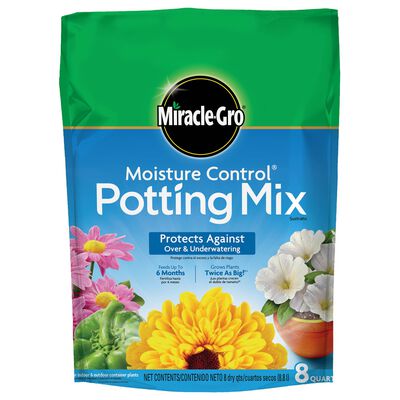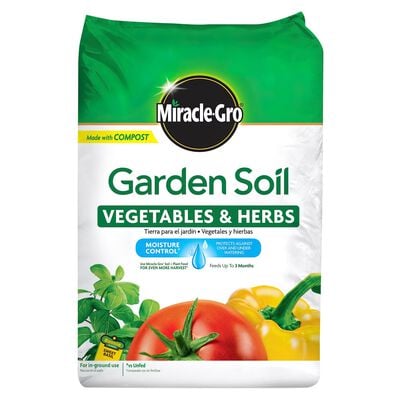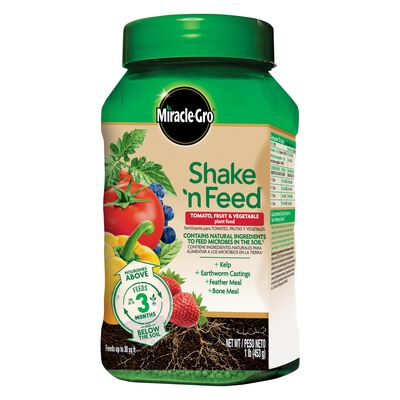
How to Grow Roses
Roses have symbolized love and beauty for thousands of years.
- Select the best type of rose for your garden location.
- Prepare the soil and plant the rose bush according to instructions (bare root or container-grown).
- Water regularly while the plant is getting established, and in times of drought after the first growing season.
- Feed roses regularly with Miracle-Gro® plant food.
- Prune roses when dormant.
- Watch out for pests and diseases.
Roses are staple plants in the landscape, and for good reason! Newer varieties are easy to grow, drought-tolerant, and bloom profusely. Learn how to select, plant, and care for roses. You'll be the envy of your neighbors!
How to Choose the Right Roses for Your Garden
Roses are not one size fits all—there are multiple types, from shrub roses to hybrid tea roses, climbing roses, and groundcover roses. The first step in growing roses is selecting the right rose bush or rose plant for your yard or garden. Roses, regardless of the type, grow best in full sun in well-drained soil. Putting the right plant in the right place goes a long way toward growing healthy plants. So which rose is right for you?
Shrub roses are great choices for landscape beds and foundation plantings next to the house. They tend to bloom a few times during the season. There are many new options that are pest and disease resistant. Groundcover roses add a bit of color to hot, dry, sunny areas. They're drought-tolerant and beautiful when allowed to spill over a wall. Climbing roses are a little less cold hardy than shrub roses, so check the plant information carefully when purchasing. Hybrid teas are the classic "bouquet" rose, and require the most hands-on care. They'll reward you with gorgeous cut flowers, though.

How to Plant Roses
Once you've selected the sunny, well-drained spot for planting, it's time to prepare the soil. The way you plant a rose depends on whether it is bareroot (usually sold with the roots in a bag with some moist wood chips but no soil) or growing in a pot (container-grown) when you get it.
To plant bareroot roses:
- Remove plants from their packaging and soak their roots in a bucket of tepid water for an hour.
- Use a measuring tape to measure the length of the roots (from the tip of the roots to where the roots meet the stem).
- Dig a hole that is two inches shallower than the length of the roots and twice as wide.
- Mix equal parts of Miracle-Gro® Garden Soil for Roses (or Miracle-Gro® Garden Soil for Flowers) and the soil removed from the planting hole. If planting in a container, use with Miracle-Gro® Potting Mix. Either way, you are helping ensure that roses receive ample nutrition while establishing new roots in the garden.
- Using the soil mixture (or potting mix for containers), build a mound in the planting hole that almost reaches to top of the hole.
- Spread the roots evenly over the mound.
- Fill in the hole completely with more of the soil mixture, covering the roots. Pack it firmly.
- Spread a 2-inch layer of mulch on the surface of the planting hole, to help conserve moisture in the soil.
- Water thoroughly.
To plant roses that come in containers:
- Remove rose plant from the pot.
- Use measuring tape to measure the height of the root ball.
- Dig a planting hole that is two inches shallower than the height of the root ball, and twice as wide.
- Place the plant in the planting hole. The top of the root ball should be about an inch above the edge of the hole. (Soil will settle over time, so you don't want to plant the rose too deep.)
- Mix equal parts of Miracle-Gro® Garden Soil for Roses (or Miracle-Gro® Garden Soil for Flowers) and the soil removed from the planting hole, and fill in around the shrub. Cover the top of the root ball with an inch of the soil mixture. If planting in a pot, use Miracle-Gro® Potting Mix.
- Cover the surface of the planting hole with 2 inches of mulch, to help keep soil moist.
- Water thoroughly.

How to Water Roses
Roses need well-drained soil to flourish, but that doesn't mean they don't need water. Regular watering is especially important as roses are establishing new roots in the landscape. Roses are fairly drought-tolerant after the first growing season.
For the first 2 months after you first plant a rosebush, give the plant a deep, thorough soaking 2-3 times per week with a hose. If you reach your finger into the soil and the top 2 inches are still moist, however, wait a few days.
For the remainder of the first growing season, water thoroughly a couple of times per week. Once plants are established in the landscape, you will only need to water roses during drought conditions. If the leaves take on a greyish cast or begin to curl, you'll know the plants need water.
Whenever you water, avoid getting water on the leaves (an invitation to disease) by directly aiming the water stream at the roots of each plant.
How to Fertilize Roses
First, allow the plants to get settled in the garden. Then, after the first month, feed plants with Miracle-Gro® Shake 'n Feed® Rose & Bloom Plant Food to help replace the nutrition your growing roses have taken up from the soil, so your plant will produce beautiful blooms. Be sure to follow label directions.
How to Prune Roses
Prune roses in very early spring, while they are still dormant.
Prune to reduce overall size by cutting each branch back to an outward-facing bud. Roses can be cut back hard, but we don't recommend removing more than one-third to one-half of the overall growth. Wear gloves and long sleeves to protect your hands, and use loppers or hand pruners. Do not shear roses.
Remove old, diseased, or dead wood by cutting the affected branches down to the bottom of the plant.
Promote airflow within the shrub by removing crossing or rubbing branches within the center of the shrub. Always cut back to an outward-facing bud. You can remove up to one-half of the growth from within the center of the shrub to promote air movement.
How to Control Rose Pests
Roses can be affected by a variety of fungal, bacterial, and insect issues. Providing the plants with the good care outlined above goes a long way toward preventing these problems, but it isn't fail-safe. Treat problems with aphids, Japanese beetles, and other pests with Ortho® Rose & Flower Insect Killer Ready-to-Use. For diseases such as black spot and rust, use Ortho® Rose & Flower Insect & Disease Control. Or, consult with your local cooperative extension service for the best course of treatment.
Ready to start growing roses? Click on any of the product links above for more information, to purchase the product online, or to find a retailer near you.


